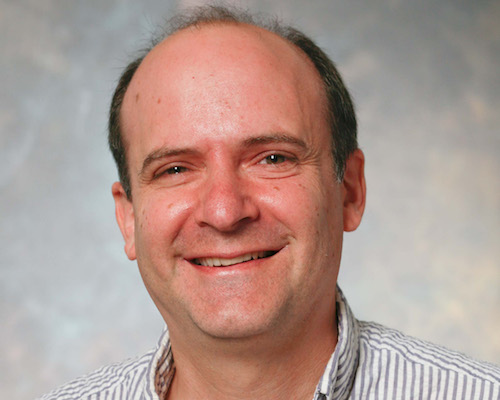Teaching Excellence at Yale
Successfully teaching students to “think like scientists” means teaching them new critical reading skills and providing them with opportunities to practice with peers.
Michael Koelle, Associate Professor of Molecular Biophysics and Biochemistry (pictured below), designs his curriculum for undergraduate science majors to teach students to “think like scientists.” Koelle develops his students’ ability to read and analyze scientific papers in Biology 101: Biochemistry and Biophysics, by carefully reducing his own analysis of the work each week to increase the students’ independence.

Koelle and his colleagues want their students to shift from consuming existing scientific knowledge toward creating new scientific knowledge. By exposing the structure, logic, and vocabulary of important scientific papers, and by modeling conversations of working scientists, students eventually learn that practicing scientists do not have clear answers to problems, but work together to interpret, test, and question data. As the semester progresses, students use newly found skills to analyze important scientific papers in discussion sections, with each participant contributing their own questions, analysis, and criticisms to the discussion.
“In my course, students start this journey by beginning with the basics: how is a scientific paper organized? What are the various sections, and what is the purpose of each? How do scientists write a paper? How does a scientific journal work? What is peer review? How do scientists read and critique a research paper?,” said Koelle. Typically, a paper will involve many technical terms that students do not recognize and involve a number of very complex laboratory methods. Koelle annotates the first few papers for his students with footnotes for difficult terms and detailed notes.
“We take well-established scientific findings that the students are familiar with and we have them read and analyze important research papers that established those findings in the first place,” said Koelle. “Students reading such a paper for the first time are often surprised to find that it may not have been so clear at the time that the problem being addressed was important, or that the approach being taken would be successful.”
Papers may use messy or difficult data to interpret and the study may have flaws or unanswered questions. “Seeing how the process of research actually proceeds stimulates students’ critical thinking skills,” said Koelle. “Learning to read, understand, and critique the primary scientific literature is a process that starts in college and continues for life.”
Research exploring critical reading skills of scientific literature:
Researchers Hoskins, Lopatto, and Stevens report the results of using the C.R.E.A.T.E. method to assess students’ abilities to read, analyze, and explain scientific research articles. Using a specific survey pre- and post-course, they found significant changes in students’ confidence in their ability to read and analyze primary literature, self-assessed understanding of the nature of science, and philosophical beliefs within a single semester’s time. The researchers conclude that students who become scientifically literate early in their college years are more likely to persist in science majors and careers. Read this article online via the CBE Life Sciences Education journal. Learn how to upload an annotated word document or PDF to your Canvas @ Yale course site via this guide.
Share with us or a colleague:
View or download a PDF version below. Send us your feedback and suggestions. To opt-out/opt-in to this newsletter, please visit Yale’s messaging service website and follow the on-screen instructions (see instructions in the sidebar above).
